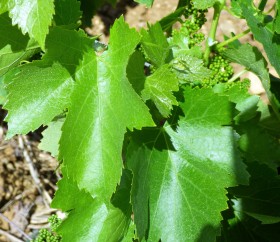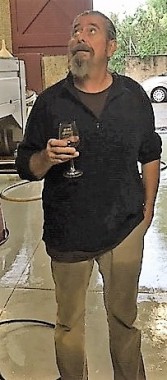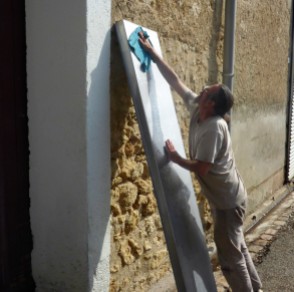Many winemakers state that they are custodians of their land rather than owners. The emphasis is on the land rather the winemaker. The land has been there, often as a vineyard before the winemaker and will be there for a long time after the winemaker has departed. Therefore, the human interaction with that land is one of care and nourishment rather than exploitation. Whilst many say that, not all of them fulfil that important statement. It is a fact that as winemakers age the future of their vineyards becomes an issue, what will happen to them, who will take over?
Jeff Coutelou is aware that as he gets older there is a question mark over the future. He has no children and his nephew and niece are not interested in becoming winemakers. Jeff is the 4th generation of Coutelous and has built upon the work of his family to create a domaine renowned around the world. After 20 years of making the wine himself he is also looking to the future. I will explore some of the new vineyards he has purchased in the last year or two but in this post I want to describe how work has begun for his own personal future.
The Coutelou family have their origins in St. Chinian and Jeff himself attended school there. The family home is still there with its small vineyard but there is also a vineyard just outside of the village itself. When he retires Jeff would like to have that vineyard so that he can look after himself without the need to employ others and the associated bureaucracy and social charges of the current large domaine. The vineyard is in a quiet valley, on a slope looking over towards St Chinian and the dividing line in the appellation, there is schist soil to the right in the photo below and limestone to the left. At a couple of hectares it would keep him busy but not overwhelmed.
Back in 2019 the vineyard was cleared and planted with some classic Languedoc grapes. However, due to the pandemic the vineyard has not had the attention Jeff would have liked until we went there on September 23rd. A bright, sunny day started off chilly but by mid afternoon we were working at almost 30c temperatures and were in the direct sun. It was hard work. The vineyard had overgrown with weeds, brush. Quite a few of the young vines planted in 2019 had died, as is the norm, and needed to be replaced. A full day’s hot and sweaty work lay ahead.
Manu, had rejoined us towards the end of the vendanges and he spent a lot of the morning with Gilles strimming away large clumps of weeds and brush and using a pick and pioche to dig some out. Matteo was hard at work on the drill which was a heavy machine, vibrating heavily as it scooped out the hole which would be used to plant the replacement vines. Steeve, Joffroi and myself busied ourselves mainly with the planting.
As ever these days Jeff wanted to create a complantation on the site. Mixed in with the traditional varieties planted in 2019 would be some Grenache, Macabeu and Muscat d’Alexandrie, one of Jeff’s favourite grapes, but also Fer Servadou and Mauzac. Fer Servadou (often just called Fer) is relatively unknown, mostly found in Marcillac and Gaillac between Languedoc and Bordeaux. I like it as a grape as I am fond of wines from both areas and it gives a distinct spicy, peppery flavour to wines and, maybe its name is suggestive, but a sense of iron filings. Mauzac is widely planted in the Limoux area as well as Gaillac again. A white grape, usually made into sparkling wine, it adds weight to blends with its white fruit flavours.
We were under strict instructions from Jeff to spread the new plantings around the vineyard and avoid clumps of the same variety, forming a true field blend but also hopefully reducing the risk of disease spreading from one variety to another as some are more resistant to mildew than others. Into the hole went the young vine, organic fertiliser and the hole was refilled. New plants need watering, especially on a hot day like that so Jeff was to and fro with containers. Matteo and Steeve have returned regularly to the vineyard to ensure these tender plants have been watered and are healthy.
By 4pm we were tiring and the machine must have been to, a part sheered off and we had to abandon the work with just a few rows to finish. They were completed the following day with a repaired machine.
It was hard work but rewarding for many reasons. It is good to see a vineyard developing with its promise for the future, especially this one as it will mean a lot to my dear friend in years to come. The views over the St Chinian hills were a treat and the camaraderie was, as ever, fulfilling – sharing lunch and wine whilst looking out over our work and the scenery with great people. Living in the moment but also looking to the future.






















































































































